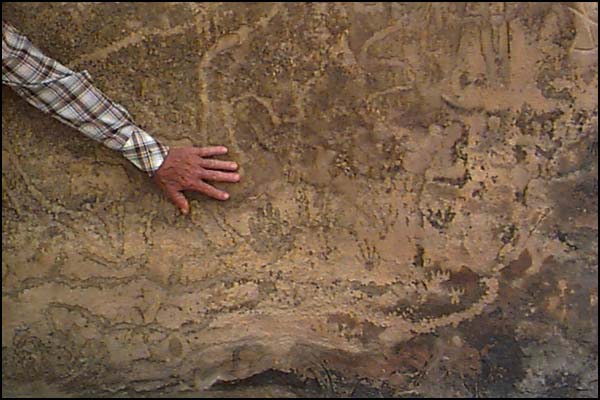|
Ancient History from the Scribes of Purgatory Commentary by Gary Vey; translations by Dr. James Harris
Many tiny hands have been traced and carved on the "mound." The references to the "mound" are frequent in this particular site. In the following example, translated by Dr. Harris, we see reference made to the "tel [hill] of Bel." Bel, or Ba'al, was traditionally a local deity of a village or geographic region whose worship was popular in the middle eastern countries prior to the monotheistic doctrine of Abraham and Moses. Reference is made to this in the book of Judges (20, 21), where the early Israelites (Levites) were attacked by a group of the Ba'al cult while traveling in the land that was given to the tribe of Benjamin (Joshua 18). The twelve tribes of Israel met and instructed the Benjamites to deliver these followers of Ba'al to be punished, but the Benjamites refused. Their disobedience resulted in a bloody conflict, ending with their being cursed and banished from association or intermarriage with the other eleven tribes. It is known that the Benjamites fled to other regions of the world, establishing colonies in what is now southern France. They were almost exterminated by this curse. It has been suggested that they were assisted in their travels by sea-going peoples. |
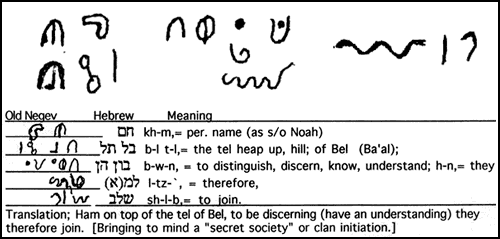
| The following panel speaks of "the mark of the curse." Again, we have no idea whether this makes reference to an epidemic with obvious physical signs or some sort of tattoo or outward sign that one belonged to an "accursed" group. In any event, the warning admonishes the observer to give assistance and appears to be a humane gesture. |
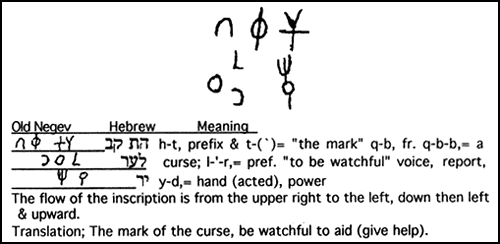
| The inscription below is one of many inscriptions that make reference to the Sun. Many of these have been found in caves and dark, protected area where rocks provide shelter from sunlight. This panel was in such an area. |
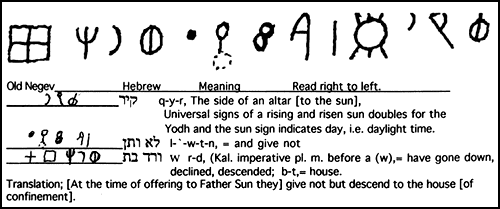
| This last panel (on this page) includes a familiar ideogram -- the reclining man with an object protruding from his mouth. We can infer that this inscription might have been read with the introduction, "It has been said that..." Also note the clever use of an ideogram with the incorporation of Old Negev symbols on the far right. |
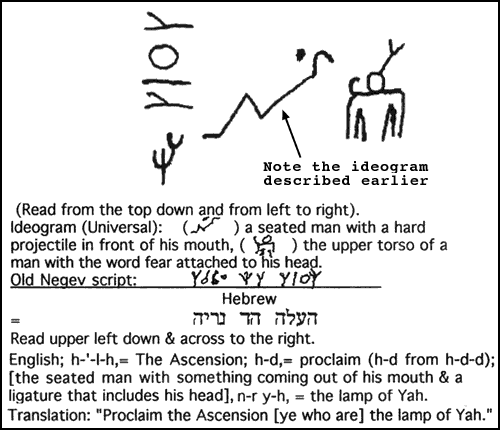
|
We will continue to present more translations from this important archaeological site. But this is a good time to remind readers that the site in Colorado remains unprotected and is vulnerable to damage by the elements as well as vandalism. We have therefore not given exact locations. Viewzone is seeking to work with organizations, students and volunteers to form an expedition to this location in the spring of 2000. Any interested parties should contact Viewzone directly for details.
|
